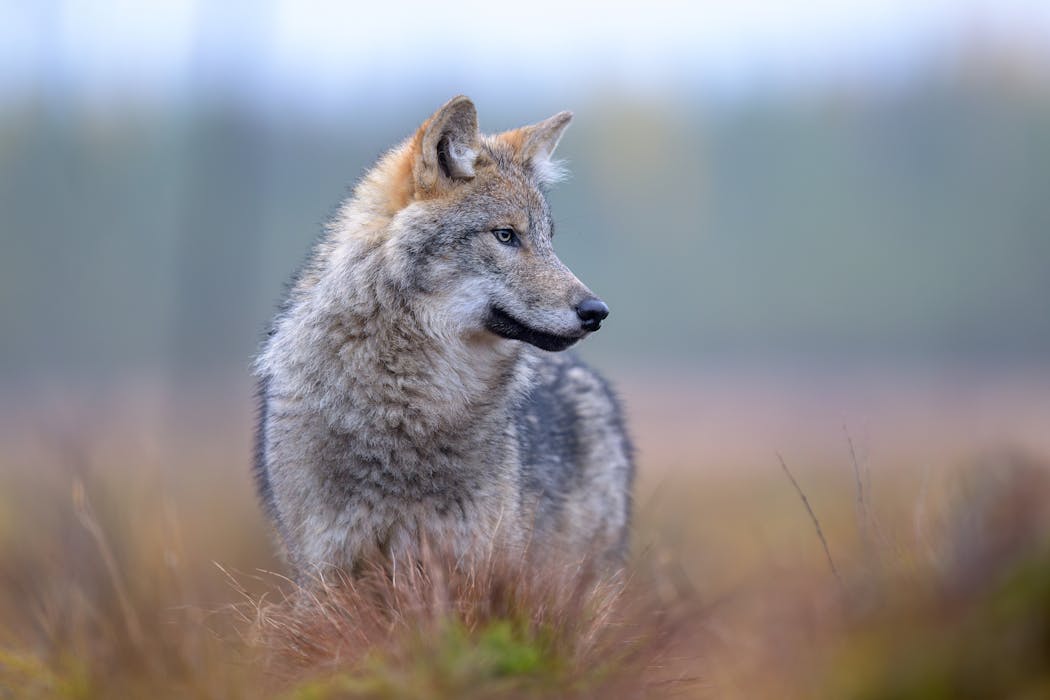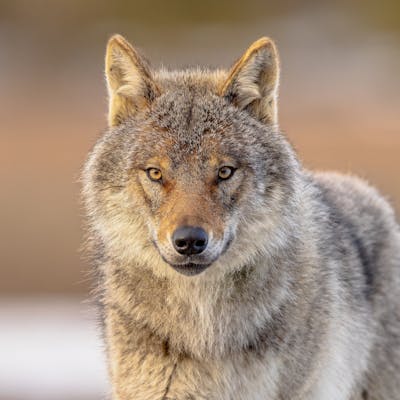
After centuries of near-extinction, Europe’s wolves have made a remarkable comeback. Over the past decade, wolf populations have surged, increasing by nearly 60%. In 2022, more than 21,500 wolves were recorded across the continent.
Countries that have long been wolf-free are now home to thriving packs. Germany, Italy, Poland, Spain and Romania each have more than 1,000 wolves. For scientists, this is a rare conservation success story: a large predator reclaiming landscapes dominated by human activity.
Where we live in Denmark, the comeback has been more modest. Wolves disappeared from Danish forests in 1813, when they were hunted to extinction – remembered only in stories and fairytales. Then, in 2012, a lone male wolf crossed the border from Germany into Jutland, Denmark’s peninsula bordering Germany. More followed. By 2017, Denmark celebrated its first confirmed breeding pack in more than 200 years.
Today, Denmark’s wolf population is estimated to be just over 40 wolves, with at least seven breeding pairs known to have produced cubs.
Yet even this small number has sparked fierce debates over livestock and public safety in one of Europe’s most intensively farmed countries, with views on wolves seeming to reflect wider political divides across Denmark.
The EU recently downgraded the protection status of wolves, moving them from “strictly protected” to simply “protected”. This change makes it easier for member states to authorise local culling.
Earlier this spring, the Danish government announced that “problem wolves” can be legally shot if they repeatedly stray into towns or attack livestock behind secure fencing. And the first legal licence to shoot a wolf guilty of several attacks was handed out in September.
Experts have already suggested that mysteriously high mortality rates and “disappearing” wolves are most likely the result of illegal hunting. And it’s feared by conservationists that quotas on wolf numbers could be introduced, as is the case in neighbouring Sweden.
As political scientists, we wanted to understand how Danes feel about the return of wolves. This summer, we included a question on wolves in a YouGov survey on climate and the environment. We asked: “Do you agree with the statement that breeding wolf packs are beneficial for Danish nature?”

Of the 2,172 respondents, 43% disagreed, 30% agreed and 27% were neutral or unsure. Breaking the results down by politics reveals clear patterns. Supporters of left-leaning and green parties were the most positive, with nearly 45% agreeing that wolves are good for nature. Right-leaning voters were far more sceptical, with almost half of the supporters of new rightwing parties fully disagreeing. Even many Social Democrats voters (generally considered centre-left) leant toward disagreement, showing how this issue has become integrated into traditional political divides.
People in Copenhagen and other large cities were slightly more positive about the return of wolves than those in smaller towns or rural areas, but attitudes remain mixed everywhere. Living in the countryside does not automatically make someone a wolf sceptic, nor does city life guarantee support.
Age, however, was the strongest predictor of support. Young Danes (18–34) were overwhelmingly supportive, with over 50% agreeing that wolves benefit nature. Support declines steadily with age, however, with the majority of those over 55 – and nearly 60% of those over 73 – expressing outright disagreement.
We have spent more than a decade looking into more traditional political issues and have never seen age differences like these. In this way, the resurgence of wolves seems to have become more than just a wildlife issue.
Wolves, myths and reality
Few animals stir the imagination like wolves. They appear as villains in fairytales, sacred protectors as well as harbingers of apocalypse in Norse myths, and ecological superheroes in biology textbooks. Some wolves became intimately involved with humans as “man’s best friend”, while others became our worst enemy – see the big bad wolf.
Conservationists call wolves a “keystone species”. This means that because they naturally control numbers of deer and other prey, their presence can allow forests and grasslands to recover. Yellowstone Park in the US is a prime example: after wolves were reintroduced, aspen and willow trees flourished for the first time in decades.
But Denmark is not Yellowstone. Its countryside is a patchwork of farms, towns and highways with small, heavily managed nature reserves. Whether wolves can restore “wild balance” here is uncertain – and Danes’ views reflect that uncertainty. Indeed, for some farmers and rural residents, wolves are not symbols of rewilding – they are real predators, threatening livestock and livelihoods.
Read more: Wolves return to Europe: what to do about them is a people problem – podcast
Fear also plays a role: parents worry about children walking in the forest, and dog owners worry about their pets. Statistically,wolf attacks on humans are extremely rare, yet perception often outweighs facts.
Incidents in neighbouring countries can add to the unease. Earlier this year, a wolf attacked a six-year-old boy in the Netherlands. And in Denmark this summer, two young boys spent hours up a tree after thinking an “aggressive wolf” was nearby. The story grabbed headlines, only for it to turn out that the animal was actually a large cat. It’s a reminder of how quickly fear spreads, whether the danger is real or not.
Our findings suggest that fears and myths about wolves are not mere folklore. They are expressed in real attitudes, reflecting deeply held values and cultural identities.
Wolves have come to represent much more than just wildlife. They are potent symbols of environmental ideals and societal perspectives – with attitudes toward them shaped less by geography and more by political beliefs and generational outlooks. For policymakers and conservationists, understanding these perceptions is essential to navigating the delicate balance between species recovery and public acceptance.
This article was commissioned by Videnskab.dk as part of a partnership collaboration with The Conversation. You can read the Danish version of this article here.
Don’t have time to read about climate change as much as you’d like?
Get a weekly roundup in your inbox instead. Every Wednesday, The Conversation’s environment editor writes Imagine, a short email that goes a little deeper into just one climate issue. Join the 45,000+ readers who’ve subscribed so far.
This article is republished from The Conversation, a nonprofit, independent news organization bringing you facts and trustworthy analysis to help you make sense of our complex world. It was written by: Kristian Kongshøj, Aalborg University and Troels Fage Hedegaard, Aalborg University
Read more:
- Europe has a wolf problem, and a late Norwegian philosopher had the solution
- Farmers told me what they really think about reintroducing lynx and wolves to Britain and Ireland
- Reintroducing top predators to the wild is risky but necessary – here’s how we can ensure they survive
Kristian Kongshøj currently receives funding from Green Societies, a faculty-funded research programme at the Faculty of Social Sciences and Humanities (SSH), Aalborg University, Denmark
Troels Fage Hedegaard does not work for, consult, own shares in or receive funding from any company or organisation that would benefit from this article, and has disclosed no relevant affiliations beyond their academic appointment.


 The Conversation
The Conversation
 America News
America News The Poughkeepsie Journal
The Poughkeepsie Journal Ravalli Republic
Ravalli Republic PennLive Pa. Politics
PennLive Pa. Politics TownTimes news.com
TownTimes news.com Associated Press US and World News Video
Associated Press US and World News Video Aljazeera US & Canada
Aljazeera US & Canada Just Jared
Just Jared NBC Southern California Entertainment
NBC Southern California Entertainment @MSNBC Video
@MSNBC Video